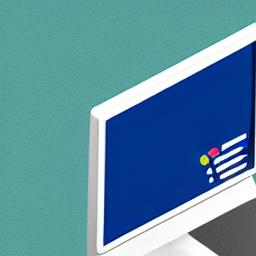
In the world of digital marketing and search engine optimization (SEO), image alt text is a crucial but often overlooked element. This powerful tool not only enhances accessibility for visually impaired users but also plays a significant role in improving your website’s SEO. In this blog post, we will delve into the importance of image alt text and offer practical tips for optimizing your images effectively.
### What is Image Alt Text?

Image alt text, or alternative text, is a brief description of an image that is included within the image tag in HTML. This text is displayed if the image fails to load and is read by screen readers used by visually impaired individuals. The primary function of alt text is to provide context to users who cannot see the image. However, it also helps search engines understand what the image is about, which can improve your website’s SEO performance.
### Why Image Alt Text Matters
1. **Accessibility**: A significant portion of the population relies on screen readers to browse the web. Including descriptive alt text ensures that all users, regardless of their abilities, can understand your content.
2. **SEO Benefits**: Search engines cannot ‘see’ images; they rely on alt text to determine the content of an image. By optimizing your image alt text with relevant keywords, you can improve your site’s visibility in search engine results.
3. **User Experience**: Alt text serves as a fallback in case an image doesn’t load due to network issues or other errors. This ensures that your content remains informative and usable even when images fail to display.
### Best Practices for Optimizing Image Alt Text
1. **Be Descriptive and Specific**: Your alt text should accurately describe the content and purpose of the image. For example, instead of using ‘dog’, you could use ‘golden retriever playing fetch in the park’.
2. **Use Keywords Strategically**: While it’s important to include relevant keywords in your alt text, avoid keyword stuffing. The text should read naturally and provide value to the user.
3. **Keep it Concise**: Aim to keep your alt text under 125 characters. This ensures it’s easy to read and doesn’t become overly complicated.
4. **Avoid Phrases Like ‘Image of’ or ‘Picture of’**: Screen readers already identify an image as an image, so there’s no need to include those phrases. Instead, jump straight into the description.
5. **Include Context Where Relevant**: Sometimes, the context of the image is just as important as the image itself. For instance, ‘A diagram showing company growth over the last five years’ provides more insight than ‘company growth chart’.
### Tools for Image Alt Text Optimization
– **SEO Plugins**: Tools like Yoast SEO and All in One SEO Pack can help you manage and optimize alt text for your website images.
– **HTML Validators**: Tools that validate your HTML can also check for missing alt text, ensuring all your images are properly tagged.
– **Screen Readers**: Using screen readers to hear how your alt text sounds can provide additional insight into how accessible your content is.
### Common Mistakes to Avoid
1. **Leaving Alt Text Empty**: An empty alt text field is a missed opportunity both for accessibility and SEO.
2. **Using Generic Descriptions**: Vague descriptions like ‘image1.jpg’ do nothing to inform the user or search engines about the content of the image.
3. **Overloading with Keywords**: Balancing keyword inclusion with readability is crucial. Overstuffing keywords can lead to poor user experience and might even be penalized by search engines.
### Conclusion
Image alt text plays a multifaceted role in enhancing your website’s accessibility and SEO. By following best practices and avoiding common mistakes, you can make your content more inclusive and search-engine friendly. Start optimizing your image alt text today and witness the positive impact it can have on your digital presence.







